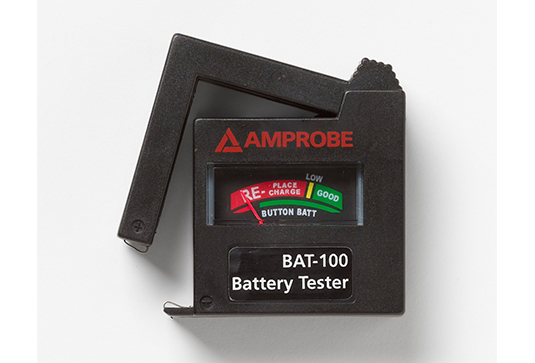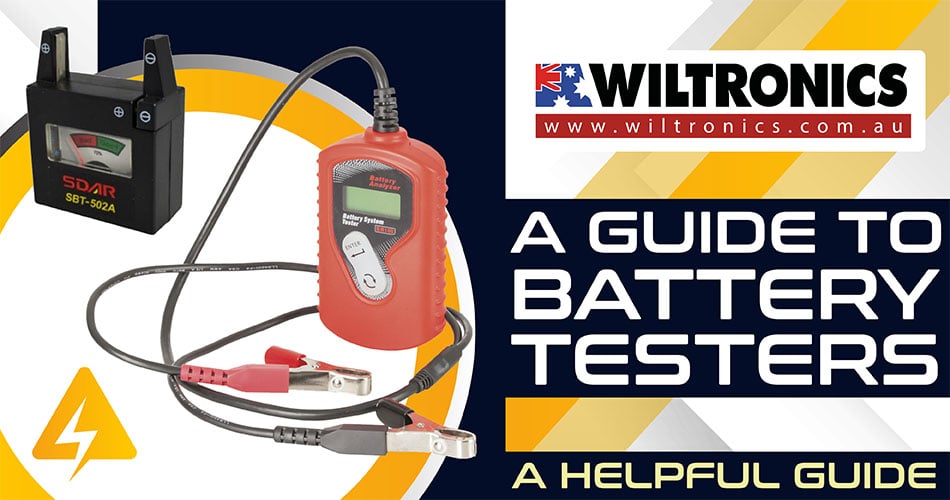How to Use Battery Tester
To use a battery tester, connect the positive and negative terminals of the tester to the battery terminals. Then, read the voltage displayed on the tester screen.
Battery testers are essential tools for checking the health of batteries in various devices, such as car batteries, electronic gadgets, and household items. By using a battery tester, you can accurately determine the voltage of a battery and assess its remaining capacity.
This simple process can help you identify faulty batteries, prevent unexpected power failures, and ensure that your devices are always powered up for optimal performance. Learning how to use a battery tester effectively can save you time and money by avoiding unnecessary battery replacements and maintaining the efficiency of your devices.

Credit: www.amprobe.com
Types Of Battery Testers
When it comes to testing batteries, having the right tester is essential for accurate results. There are two main types of battery testers – analog and digital. Each type has its own set of advantages and it’s important to understand them in order to choose the right tester for your needs.
Analog Battery Testers
Analog battery testers are a traditional choice for testing batteries. They are typically equipped with a needle that moves across a scale to indicate the battery’s charge level. These testers are reliable and easy to use, making them a popular choice among DIY enthusiasts and professionals alike.
Digital Battery Testers
Digital battery testers are modern devices that provide precise and accurate readings of a battery’s charge level. They often display the results on an LCD screen, making it easier to read and understand the information. Digital testers are known for their speed and efficiency, allowing users to quickly assess the condition of a battery.
Benefits Of Using A Battery Tester
Using a battery tester has numerous benefits that can help you save time and money in the long run. By regularly checking your batteries, you can extend their lifespan and optimize performance. Additionally, a battery tester can help in preventing unexpected failures that can disrupt your devices or equipment at critical times.
Extend Battery Life
- Identify weak batteries early
- Prevent overcharging which reduces battery life
- Adjust charging cycles for optimal performance
Prevent Unexpected Battery Failures
- Identify batteries nearing end of life
- Avoid sudden power outages
- Ensure devices function properly when needed
Step-by-step Guide To Using A Battery Tester
Preparing The Battery Tester
Before testing, ensure the battery tester is properly calibrated.
Check the battery tester’s display screen for accuracy.
Insert the leads into the appropriate ports of the battery tester.
Testing The Battery
- Turn on the battery tester using the power button.
- Connect the positive lead to the positive terminal of the battery.
- Attach the negative lead to the negative terminal of the battery.
- Press the ‘Test’ button to initiate the battery test.
Interpreting The Results
- Check the display screen for the battery’s voltage reading.
- Compare the reading to the recommended voltage for the battery type.
- If the reading is below optimal levels, the battery may need replacement.

Credit: www.wiltronics.com.au
Common Mistakes To Avoid When Using A Battery Tester
When using a battery tester, it’s crucial to be aware of the common mistakes to avoid in order to get accurate results. By steering clear of these errors, you can ensure that your battery testing process is effective and reliable. Below, we’ll delve into the common mistakes and how to avoid them while using a battery tester.
Not Fully Charging The Battery Before Testing
One of the most common mistakes when using a battery tester is not fully charging the battery before conducting the test. Failing to charge the battery completely can lead to inaccurate readings, as the tester may not be able to assess the true condition of the battery. Always ensure that the battery is fully charged before attempting to test it with a battery tester. This simple step can significantly impact the accuracy of your test results.
Testing The Wrong Type Of Battery
Another critical mistake to avoid when using a battery tester is testing the wrong type of battery. It’s essential to verify that the battery tester is compatible with the specific type of battery you are testing. Using the wrong type of tester for a particular battery can result in misleading readings and potentially damage both the tester and the battery. It’s vital to double-check the compatibility of the tester with the battery to ensure accurate and safe testing.
Tips For Maintaining And Caring For Your Battery Tester
Learn how to effectively use and care for your battery tester with these helpful tips. From proper storage to regular maintenance, this guide will ensure your battery tester remains in top condition for accurate readings.
Proper maintenance and care of your battery tester are essential to ensure accurate and reliable readings. By following a few simple tips, you can help extend the lifespan of your device and maximize its performance. In this section, we will discuss two crucial aspects of maintaining and caring for your battery tester: Keeping the Tester Clean and Calibrating the Tester Regularly.
1. Keeping The Tester Clean
Maintaining a clean battery tester is vital for optimal functionality. Over time, dust, dirt, and debris can accumulate on the surface of the device, potentially affecting its performance. Regularly cleaning your battery tester will help prevent any build-up and ensure accurate readings.
Here are a few tips to keep your battery tester clean:
- Use a soft, lint-free cloth to wipe the exterior of the device.
- Avoid using harsh chemicals or solvents, as they may damage the screen or buttons.
- Gently clean the screen with a microfiber cloth to remove fingerprints or smudges.
By incorporating these cleaning practices into your routine, you can keep your battery tester in excellent condition.
2. Calibrating The Tester Regularly
Regular calibration is crucial to ensure the accuracy of your battery tester’s readings. Over time, the device may drift from its original calibration, resulting in inaccurate measurements. By following a calibration schedule, you can maintain the reliability of your battery tester.
Here’s how to calibrate your battery tester:
- Refer to the user manual for specific calibration instructions.
- Typically, the process involves connecting the tester to a known voltage source.
- Follow the step-by-step guide provided by the manufacturer.
By calibrating your battery tester regularly, you can trust the readings it provides and make informed decisions regarding battery health.

Credit: www.youtube.com
Frequently Asked Questions For How To Use Battery Tester
How Do You Test A Battery With A Tester?
To test a battery with a tester, first, connect the red positive (+) lead to the positive terminal and the black negative (-) lead to the negative terminal. Then, check the reading on the tester. If it falls within the specified range, the battery is healthy; otherwise, it may need replacement.
How Do You Use A Battery Load Tester?
To use a battery load tester, connect it to the battery terminals, follow the manufacturer’s instructions, and interpret the results for battery health assessment.
How Do You Use A Battery Button Tester?
To use a battery button tester, insert the battery and press the button to get a reading. Check the display for the battery’s status.
What Is The Most Accurate Way To Test A Battery?
The most accurate way to test a battery is to use a digital multimeter. Connect the multimeter to the battery terminals and check the voltage. A fully charged battery should read around 12. 6 volts. If it reads lower, the battery may need recharging or replacing.
How Does A Battery Tester Work?
A battery tester measures the voltage and performance of a battery to determine if it’s functioning properly.
Can I Use A Battery Tester For All Types Of Batteries?
Yes, a battery tester can be used for various types of batteries, including AA, AAA, C, D, and 9V.
Why Should I Use A Battery Tester?
Using a battery tester helps you identify weak or dead batteries, allowing you to replace them before they cause inconveniences.
Conclusion
Using a battery tester is essential for maintaining your electronic devices. By following the steps outlined in this guide, you can ensure the longevity and efficiency of your batteries. Regular battery testing will save you time and money in the long run, giving you peace of mind.
Mastering the battery tester will make you more self-reliant and better equipped to handle any power-related issues.


